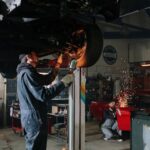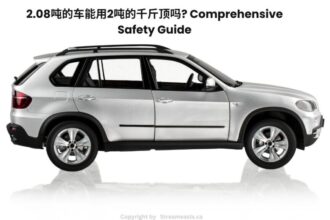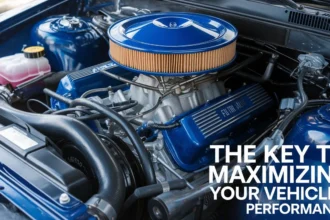Buying a truck is a significant investment, and one of the most crucial steps in the process is the test drive. Whether you’re interested in a rugged pickup for work or a versatile vehicle for daily use, taking the time to properly evaluate how it handles, accelerates, brakes, and fits your needs is essential. Test drives give you firsthand insight into the truck’s performance, comfort, and features—elements that can’t be fully understood from a spec sheet or online listing. For those searching for the right fit, a truck dealer in Queensbury, NY, can offer not only a wide selection of models but also a structured test drive process designed to help buyers make informed decisions. In this article, we’ll walk through detailed guidelines for test-driving trucks at dealerships in Queensbury, ensuring that you get the most out of your experience and drive away with confidence.
Scheduling a Test Drive in Advance
One of the first things to do before visiting a dealership is to schedule your test drive. While many dealers accept walk-ins, setting an appointment ensures the truck you want is available and that a sales representative can dedicate time to assist you.
Benefits of Scheduling Ahead
Scheduling in advance allows the dealership to prepare the specific model and trim level you’re interested in. This is especially helpful if you’re considering a popular or new release, as availability can be limited. It also gives the dealer time to fuel, clean, and inspect the truck before your visit.
How to Schedule
Most dealerships offer multiple ways to schedule a test drive: through their website, by phone, or by visiting in person. It’s helpful to provide the model, trim, and any key features you’re interested in. Mentioning your time constraints can also help the staff prepare for a more streamlined visit.
Preparing for Your Visit
Once your appointment is scheduled, preparing ahead of time will make your experience more productive. Arriving informed allows you to focus on evaluating the vehicle instead of trying to learn everything during the visit.
What to Bring
You’ll need a valid driver’s license, and in some cases, proof of insurance. If you’re considering financing, bringing pay stubs or pre-approval letters may also be useful. Comfortable clothing and appropriate footwear are recommended so you can easily get in and out of the truck and test all its features.
Research the Truck
Before you step onto the lot, research the truck’s specifications, standard features, and available options. Understanding what the base model includes versus higher trims can help you assess whether you’re testing the configuration that matches your needs.
Evaluating Exterior Features
The first part of any good test drive starts with a walk-around. This is your chance to assess the truck’s exterior build, condition (if used), and features that affect usability and convenience.
Inspect the Body
Look for any visible signs of wear or damage if you’re testing a used truck. For new trucks, check the build quality—panel alignment, paint finish, and bed construction. Also, inspect lighting systems, towing hooks, running boards, and wheel condition.
Bed and Towing Equipment
Trucks are often used for hauling, so examine the truck bed. Check its size, liner material, and whether there are additional storage features. If towing is a priority, ask about the hitch receiver, trailer brake controller, and towing capacity.
Assessing Interior Comfort and Design
Next, step inside and get a feel for the cabin. The interior of a truck is where you’ll spend most of your time, so it’s important to evaluate how comfortable and functional it is.
Seating and Space
Adjust the seat for comfort and test all its adjustments. Ensure there is adequate legroom and headroom in both the front and back seats. If you’re planning to use the truck for family or work crews, the space in the back is especially important.
Controls and Displays
Test the infotainment system, climate controls, dashboard layout, and visibility from the driver’s seat. Check how intuitive the controls feel and whether the display is easy to read in daylight. Features like backup cameras, navigation systems, and smartphone integration should also be evaluated for responsiveness and usability.
Driving on Different Road Conditions
The heart of the test drive is getting behind the wheel and experiencing how the truck performs. Ideally, your route should include a variety of road conditions to test different performance aspects.
Acceleration and Braking
Pay close attention to how the truck accelerates, especially if it’s loaded or if you plan to tow with it. Braking should be smooth and responsive. Ask the dealer if the vehicle has anti-lock brakes, electronic brake-force distribution, or other braking assists.
Steering and Handling
Test the steering on curves and during parking. Trucks can vary significantly in turning radius and ease of maneuverability. Try parking in tight spots and reversing to get a real sense of how manageable the truck is in everyday use.
Highway and City Driving
If possible, drive on both city streets and highways. City driving helps you assess stop-and-go handling, visibility, and comfort in traffic. On the highway, pay attention to road noise, cabin insulation, and how stable the truck feels at higher speeds.
Testing Utility and Practical Features
Beyond performance, trucks are workhorses, so be sure to test any features tied to practicality, utility, and functionality.
4WD/AWD Engagement
If the truck includes four-wheel or all-wheel drive, ask if you can test its engagement—especially if you’re considering it for off-road or winter driving. Some systems can be switched on the fly, while others require stopping the vehicle.
Suspension and Ride Quality
Trucks often have firmer suspensions, but that doesn’t mean the ride should feel harsh. Evaluate how it handles bumps and uneven roads. Ask the dealer if the truck is equipped with adaptive suspension or off-road-tuned shocks, which can enhance comfort or capability.
Storage Options
Interior storage is often overlooked but critical for daily use. Check for under-seat storage, center console size, and cubbies for personal items, tools, or gear. Fold down any seats or hidden compartments to see how versatile the interior space is.
Asking the Right Questions
During and after the test drive, take the opportunity to ask the sales representative specific questions to clarify your observations and learn more about ownership.
Ownership Costs
Ask about maintenance costs, warranty coverage, fuel efficiency, and common service intervals. Knowing the long-term ownership costs can help you make a financially sound decision.
Trim and Package Options
Find out what packages are available for the model you’re testing. The truck you’re driving might include optional upgrades that impact its price. Understanding what comes standard versus what’s extra will help you compare models accurately.
Vehicle History (for Used Trucks)
If you’re test-driving a used truck, request a vehicle history report and maintenance records. Ask if it’s been in any accidents, had major repairs, or been used for heavy towing—all of which affect long-term reliability.
Post-Test Drive Evaluation
After your test drive, take a few minutes to reflect on your experience. It’s easy to get caught up in the excitement of a new vehicle, but it’s important to evaluate objectively.
Compare to Other Models
If you’re still undecided, test drive several trucks at different dealerships or the same dealership if they have multiple brands. Comparing ride quality, features, and pricing will help clarify which truck truly fits your lifestyle.
Review Notes and Preferences
Make notes on how the truck felt during the drive, any standout features, and any concerns you had. This will help you remember key impressions if you’re comparing multiple trucks.
Follow-Up With the Dealer
If you’re not ready to make a decision immediately, ask the dealer to keep you informed of any upcoming promotions or new arrivals. Most reputable dealerships in Queensbury are happy to stay in touch without pressuring you to buy right away.
Conclusion
A test drive is more than just a quick spin around the block—it’s your opportunity to thoroughly evaluate whether a truck meets your personal, professional, and financial needs. By scheduling your visit, preparing ahead of time, and asking the right questions, you can make a confident decision when it’s time to buy. Ensuring that your test drive is both informative and pressure-free. From performance and comfort to utility and technology, the right test drive can reveal everything you need to know to find the perfect truck.
















